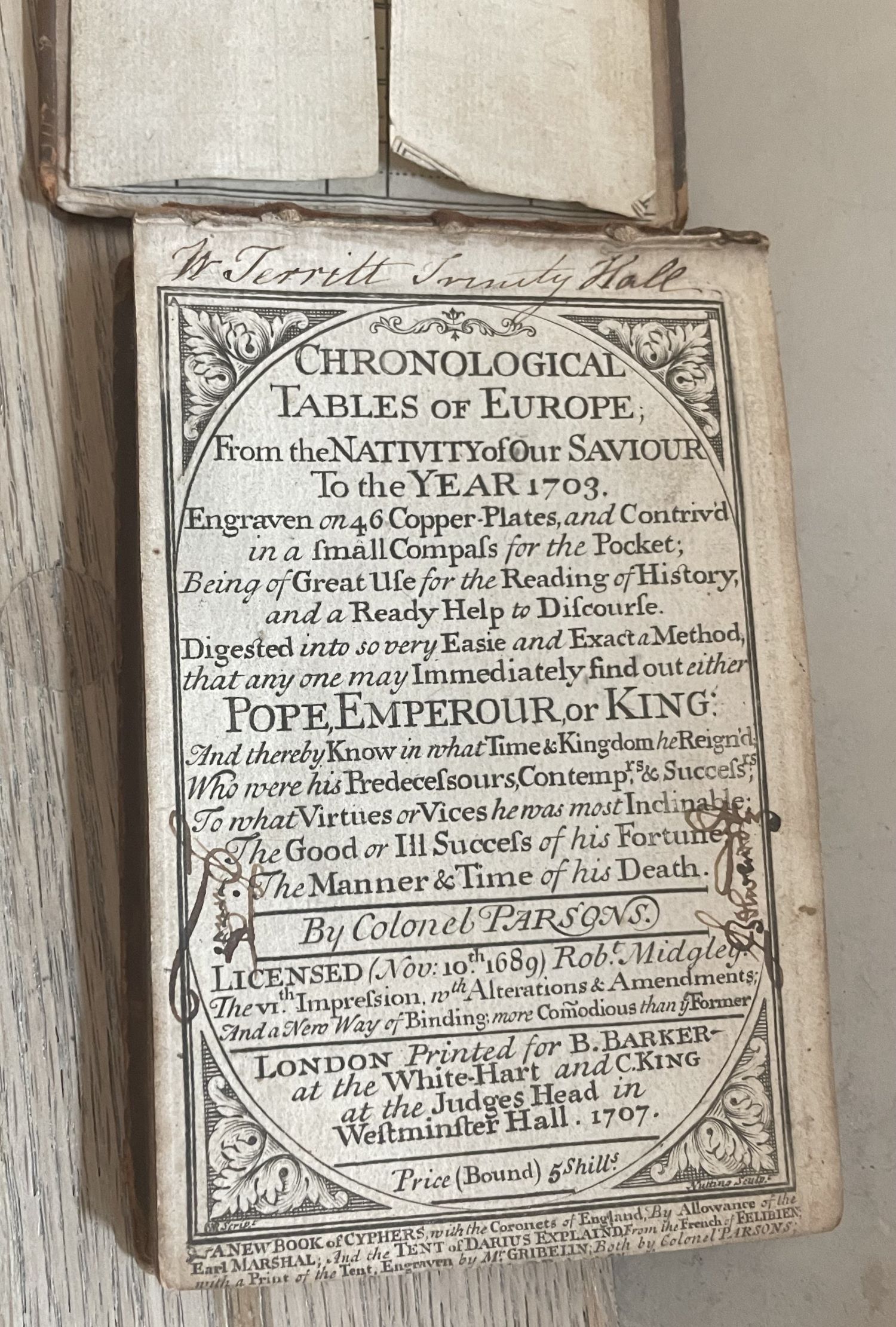The book is the Chronological Tables of Europe. From the Nativity of our Saviour to the year 1703. [2] The engraved title page identifies ‘Colonel Parsons’ as the author, although, in fact, it is a translation and slight modification of Guillaume Marcel’s Tablettes Chronologiques, first printed in Paris in 1682.
Spotting a money-making opportunity, William Parsons (1658–c1725) a former English army officer, simplified Marcel’s complex layout and symbolic scheme, and reduced its size so that it was easily portable. His new format was a commercial success, and many editions followed, selling 4,000 copies in about a decade.
Each page of this remarkable pocket-sized book represents a century (1st to 17th), meticulously detailing the names of monarchs and rulers. But what sets Parsons’ work apart are the mysterious symbols adorning its pages, offering insights into the character and fate of these historical figures. A fold-out chart provides the key so the reader can understand the symbols given in the tables.
Among the symbols, the sun, or sol, reigns supreme. Representing the most glorious of all characters, it signifies a ruler endowed with the greatest perfections—a monarch esteemed as a most accomplished ruler by historians; one example is Elizabeth I.
Contrastingly, the symbol for Saturn, resembling an ‘h’ shape, paints a grim picture. It denotes a cruel and bloody monarch. This has been applied to Elizabeth’s sister Mary I. Mary’s entry also has the dart and luna symbols (crescent moon) which signify misfortune, marked by adversity and hardship.
The symbol for Mars—a circle with an arrow—signifies a prince of good courage and a warrior who leaves a mark on the annals of history with their bravery. Suleiman the Magnificent is in this category.
The symbols provide an ingenious means to save space. Compact and lightweight, the book was designed for portability—a ready companion for the avid scholar or curious student. Its ingenious layout, paired with symbols for quick reference, made it a practical tool for navigating the complexities of European history. As it says on the title page:
“…digested into so very easie and exact a method, that any one may immediately find out either pope, emperour, or king, and thereby know in what time & kingdom he reign’d, who were his predecessours, contemp[ou]rs, & success[ou]rs, to what virtues or vices he was most inclinable, the good or ill success of his fortune, the manner & time of his death.”
This humble chronology serves as a reminder of our connection to the past. Through its pages, we not only uncover the stories of long-forgotten rulers but can also trace the previous owners, bound together by a shared quest for knowledge. More than two hundred years after the book was purchased in Cambridge by a student at Trinity Hall, it has once again ‘returned’ to the College.
